|
I have had a lifelong fascination with Shamanic items, mostly from so-called "Primitive" peoples. I find these pieces to be of incredible Beauty. High art. We collect from several areas, Indonesia, mostly Java, Nias, Sumatra, Borneo, Timor and Bali; India; Philippines; Tibet; Persia; Nepal; Precolumbian from Mexico and South America; Papua New Guinea and Africa. If you have an interest in one of these areas, leave and answer or comment and I will see what I can dig up! As a "collector" rather than an "acquirer" I consider it important to know about these objects. What was their purpose? Who made them? What was their religion, sociology, political climate, art and music? While an absolute understanding of how these pieces were used, why and for what purpose they were created would be very difficult to intellectually understand because many were made by people with no written language and their concepts are vastly different (on the surface) from our "civilized" ideas. These "primitive" peoples have very little understanding of 'decoration', of Art as we know it. Each piece was deliberately crafted for some spiritual purpose. A bridge, a link to spirits, gods, or ancestors. Not art to be hung on a wall, but an ongoing bridge. Protection. Fertility. Power. Communication. Their unwritten history. To begin the process to make an item, a very special tree was chosen by divination. The tree was prayed to at a certain time. Then it was carefully cut down. The wood preserved in special ways, maybe slowly carved by firelight, under a full moon. Pigments, rattan, all the ingredients collected slowly and lovingly. It might take a very long time with many ceremonies to finally come into being. An incredible amount of effort, ritual, expense. If you ask me for definitions, I may tell you that a certain piece was made by, for instance, the Asmat tribe in Papua New Guinea to lovingly communicate with a revered ancestor. That this person, before they passed on requested their skull was to be adorned in a certain way, with certain pieces that would enhance their communication with those still living. And that their descendants could talk with them by holding that skull, seek their advice, seek their guidance from a higher realm. Here is an Asmat skull from our collection
Sounds, vibrations are very important in Shamanic practices. Here is a picture of a Tibetan / Nepalese bell used by a practising Shaman. I love the old patina and wear from long time usage. The object next to it is called a Dorje. This can be used to strike the bell and direct the vibrations. The bell and Dorje are made of seven metals: gold, silver, mercury, copper, lead, iron and tin. As this bell was being made, prayers and mantras were sung so that these prayers would come out later when the bell was played.
This is a picture of a Keris from Indonesia, Java. The keris is a religious object. Each was made for a specific person. Astrology, numerology, as well as his occupation all fit into its creation. A priest was consulted. Offerings made. A blacksmith, or panday was consulted. The number of waves (luks) in the blade determined to fit a numerological pattern. The patterns of metal in the blade were determined by the occupation of the person. A scholar would have a different pattern than a soldier or a banker. The blade was crafted from various metals. Meteoric iron was one of the preferred metals, these metals were heated in a forge and hammered together creating layers and patterns. Some keris were only forged on certain propitious days. A Panday might begin preparing for that day in advance. Fasting, prayer, sacrifices. Then on that special day, he would bathe, put on clean clothing, take the blade to his forge in darkness, so he could judge the exact temperature by the glowing color of the metal. Then he might hit it once with his hammer. Put it away and wait for another propitious day. The propitious days were determined by astrology among other factors. Pandays, blacksmiths, and especially an Empu (a Panday who made keris for the King), were respected and feared. They seemed to be working in the fires of Hell. Hammering out beautiful patterns in metal. Smoke, fire, noxious fumes abounded. They were the people whom you really did not want to invite to your next party, but you did anyhow to keep from offending them! Finally after the blade was finished, the "dress" was carefully fitted and made by special carvers. They worked in beautiful surroundings, light airy, incense. Every year, in a great ceremony, the blade is removed from the handle and purified, cleaned and soaked in a bath of arsenic trioxide to bring out the colors. It is then blessed and perfumed. Every collecting venue has traditions and rules associated. The blade is the soul in all of Indonesia. The blade is passed down from generation to generation. It is considered a 'conduit to the ancestors' who once held it. A Javanese man in prayer, uses his particular keris to communicate with them. In Java and Bali, much attention was given to the Two Worlds, the Niskala (invisible world) and the Sekala (the visible world). The keris was a bridge between them. Everything, and I mean EVERYTHING started in the Niskala and manifested in the Sekala. This was absolute! If you had a manifestation in the 'real world' it was because you properly worked with the Niskala. The "dress" is much less important as long as it is clean and in good condition. Often the 'dress' is changed multiple times during the lifetime of each owner. Here, the lovely patina we prize in antiques, is considered shameful. Like having your wife go about wearing dirty rags. The blade shows the three dimensional look of the metal, but when you run your fingers over it, it is completely flat. An example of the blacksmith's skill His keris was an Indonesian man's most prized possession. Treated with respect. Carried with him. The blade was never unsheathed in public. If you were a close friend and visited his home, he might show you the blade. But even if he owned several, he would only show one blade at a time. In the Philippines, the keris, while also a talisman, was a robust and very powerful weapon of war distinguished in name from the indonesian variety by being called a "Kris." Another mystical two handed battle sword is a Kampilan. Magellan made his last mistake confronting a band of Filipino warriors called the Moro and died by a Kampilan, The headhunting Dayak of south Borneo had powerful swords called Mandau. To give these a "taste for blood" the handles and scabbards often had leeches carved into them. Please understand these devices were NOT considered decoration. They were made to enhance the power of the artifact. We have a few of these swords, also. Headhunting was a major part of their fertility rituals. Here are some Tibetan / Nepalese pieces. These are called Kangling and are made from human femur thigh bones. Human bones were used in many shamanic rites, partially to let us know that life, physical life is temporary. Monks often asked for their bones to be used as ritual objects. The one on the far right belonged to a child. As might be expected there is a lot of emphasis on from whom the bone came from. Young pure people, monks and nuns, a mother who died in childbirth but the child lived to become a famous figure was considered particularly auspicious. Mine came from a very knowledgeable person in Kathmandu, but many that you see for sale have come from grave robbers. Here is an image of a monk doing the Chod Ritual, using a Kangling original practiced by the Bon r Bonpo a Pre-Tibetan religion that was in place before Buddhism in Tibet. (700AD).
In the Tantric Chöd Ritual practice the practitioner, motivated by compassion, plays the kangling as a gesture of fearlessness, to summon hungry spirits and demons so that he may satisfy their hunger and thereby relieve their sufferings. It is also played as a way of "cutting off of the ego." Another instrument is an hourglass shaped drum called a Damaru. The most auspicious of these were made from the skull caps of a young male and a young female. Others were made of special woods. The identification of Bones and particular personal ritual items were used in the testing to decide the next Dali Lama. If the candidate had been a Dali Lama in a past life, he would recognize his personal articles from that past life. If the new candidate could pick exactly those particular articles from a pile of similar articles, it was likely he was the reincarnation of that being. And if we see beauty in an artifact, or sunset, or a flower, or a person, that brings us closer to our God, our Source. Isn't that what all this is about?
showing 1 of 5
show 4 more comments
|

|
Western civilization always looking for a positive response to his anguish, try to understand these objects, archetypal evidence of past common experiences also in our culture but first removed from the coming of the main religions and then denied from the prevailing cultural positivism, through their catalog in rational categories that have nothing to do with the spiritual world that they produce. In this way it's possible to investigate the iconographic symbols associated with them, to appreciate their aesthetic quality, quite impossible from here to try, seriously, to perceive, to feel, to understand more. ethnoflorence GIAN ! Is this you ? What a surprise and honor to find you here !
(25 Sep '12, 12:55)
Dollar Bill
|
|
I felt an interest around your shamanic's kit, I was curious to know the reason, it seems to me a place where your beautiful collection and passion can be shared. gm Thank you GM, for the kind words. I appreciate your posting it on your site.
(28 Sep '12, 18:51)
Dollar Bill
|
|
As part of my Shamanic Training, I made a shamanic wand for my own personal use. I started with an oak branch. I had gathered it some years before, and it had dried and hardened nicely. I first wrapped the handle in leather. and hand-drilled a hole in the end for a leather carrying loop. I attached another smaller wand I had received from a South American Indian Tribe, and wrapped all of it with leather strips and hand-carved bone. I attached real turquoise beads, copper wire for conduction, and finished it with eagle and other feathers. The final step was hand-carving the end to hold a channeling quartz crystal. (That was the hardest past- I did not want to use glue.) Here are some pictures of my wand:
I have used my wand for wedding ceremonies, during Reiki Sessions- all sorts of applications in my work. I love it. I thought you all would like to see it. Blessings, and Peace, Jaianniah That is cool! Thanks for sharing
(28 Sep '12, 07:59)
Fairy Princess
Very nice, Jai. I feel it!
(28 Sep '12, 18:49)
Dollar Bill
1
Hi Jai.
(28 Sep '12, 21:48)
The Traveller
showing 2 of 3
show 1 more comments
|
|
The Asmat skull and piercings in general remind me of the following link: http://1.bp.blogspot.com/-gFXbX39YoZc/TgX_9RHa2-I/AAAAAAAAA2g/zPTMgO5DzfQ/s1600/Pain-naruto-shippuden.jpg His name is PAIN and he isa character from Naurto Shippudden. |

If you are seeing this message then the Inward Quest system has noticed that your web browser is behaving in an unusual way and is now blocking your active participation in this site for security reasons. As a result, among other things, you may find that you are unable to answer any questions or leave any comments. Unusual browser behavior is often caused by add-ons (ad-blocking, privacy etc) that interfere with the operation of our website. If you have installed these kinds of add-ons, we suggest you disable them for this website


_1.jpg)
.jpg)
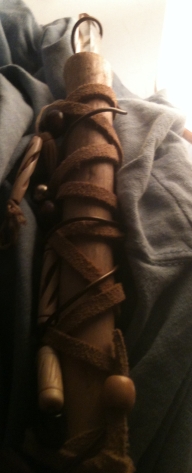
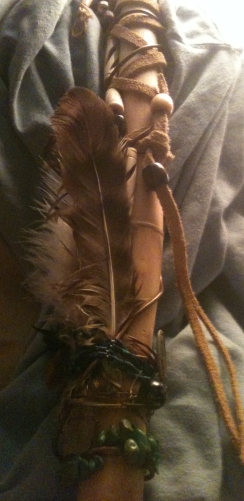
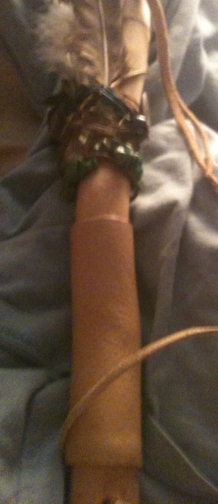
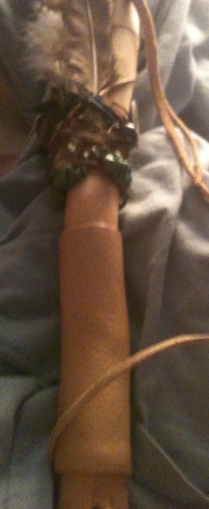
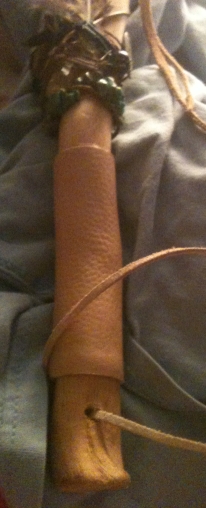

Thanks for sharing. I would like to see crystals being used. If you have any. Thanks
@Fairy Princess - don't have any pictures. I lay on my back and place one on each chakra.
Thank you! :) Where is the karate chakra? ;)
Karate Chakra? You can seek it in the Dojo. :)
@Dollar Bill - Wow! These are cool! Thanks for sharing.